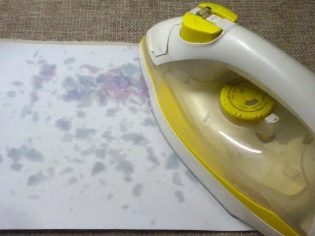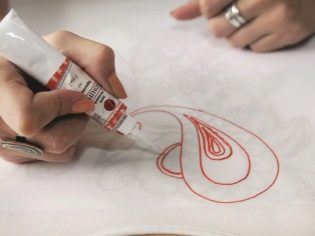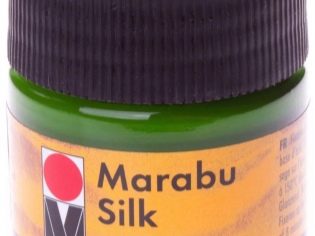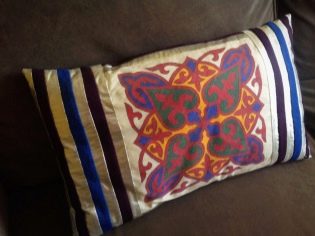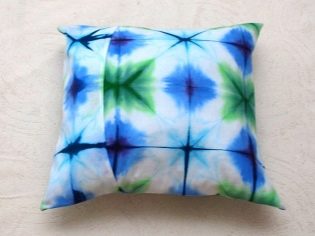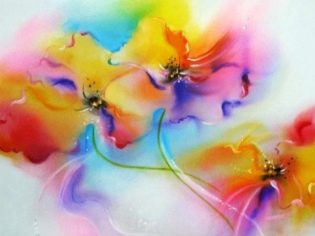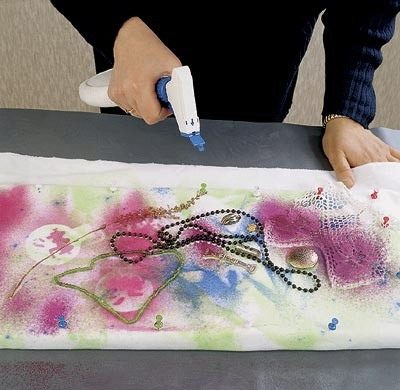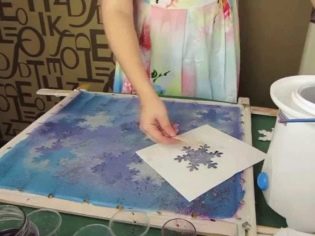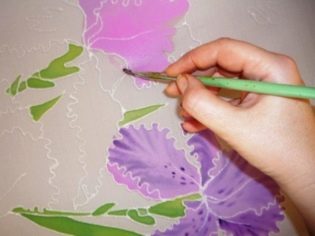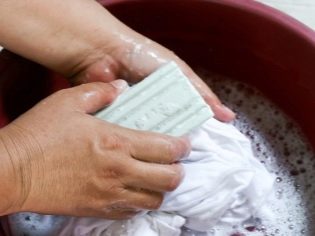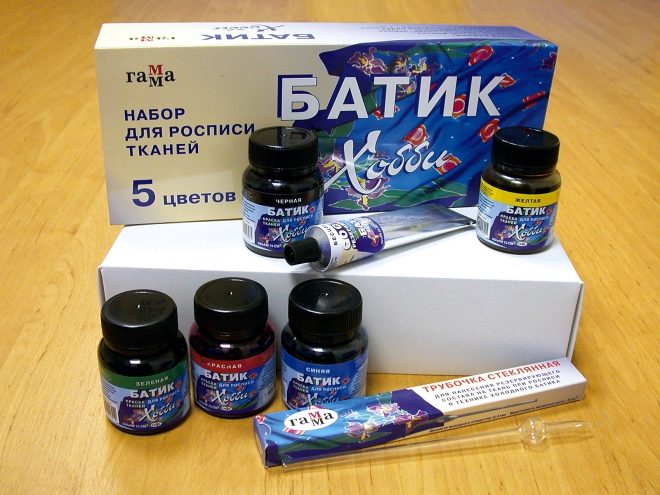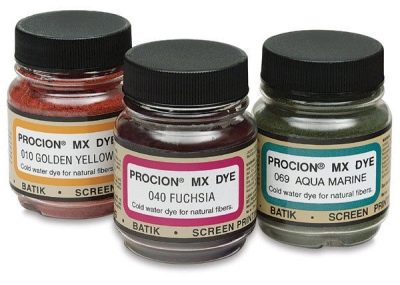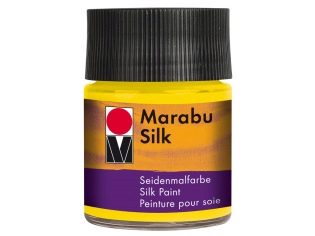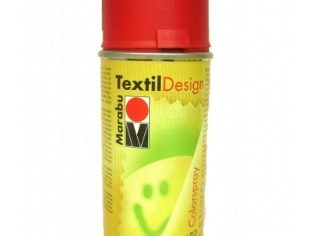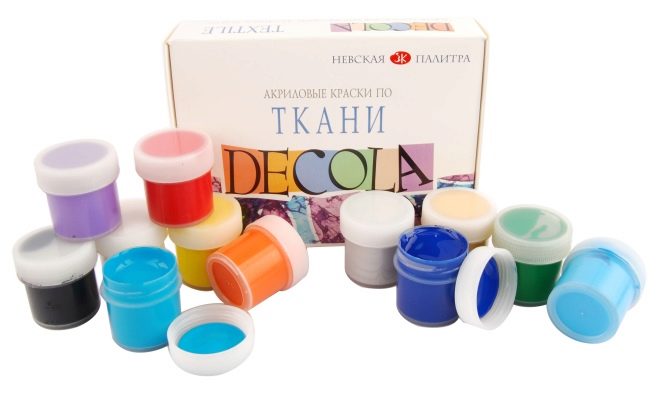Acrylic paints for fabric: the subtleties of choice
In our time, it is not difficult to do your favorite hobby, armed with the necessary tools. There are many opportunities. One of the most interesting activities is painting with paints on fabric.
With the help of all the necessary accessories, you can create unique canvases, original prints on clothes. And acrylic paints are best for this.
Advantages and disadvantages
Acrylic paints are made on the basis of polyacrylates. Available in jars, cans or tubes. They are frosted, pearly, glossy, with sparkles, metallic.
Special skills for drawing acrylic on fabric is not required. But it is necessary to take into account some features of acrylic paints.
When applied to fabric, acrylic is not absorbed, but covers matter, forming a dense area. Elasticity is lost.
Diluted with water or thinning agent. It is recommended to use the latter.
Paints can be applied in several layers, improving the drawing, drawing individual parts. There is a practice of fixing an image with an iron from the inside of the product through a thin sheet of paper.
Contours for drawing on fabric are also available. They are used for drawing borders, so that the colors do not spread throughout the fabric, but remain within the pattern.
Pros:
- easily dissolved in water;
- dry quickly enough;
- different shades mix well, producing a new color;
- available;
- the finished picture is not washed off with water when washing;
- the brightness of the color lasts quite a long time
Minuses:
- properties of acrylic deteriorate with time, so it is necessary to observe the storage period;
- dye strongly spreads in matter, therefore it is necessary to use contours;
- When mixing different colors, it is difficult to get the desired shade immediately.
Acrylic paints are made from environmentally friendly materials, they are hypoallergenic, do not have a sharp unpleasant odor.
What fabric is suitable for drawing acrylic?
Fabric can be chosen any. But you need to familiarize yourself with the marks on the jars of paint, for which matter they are suitable.
For thin, soft materials (silk, chiffon, cambric) use acrylic marked "Silk". This paint does not greatly change the stiffness of the fabric.
For dense materials (cotton, linen, denim, leather, suede, velvet) use dyes with marking "Textile". They have poor fluidity and are easy to work with.
If you want to see the original color of the paint on the product, it is better to choose white or light matter. On dark and colored canvases shades will vary slightly.
Types of staining
Hand-painted fabric is called batik. This uses reserving compositions. There are several types of painting:
- Hot batik using melted paraffin wax or wax. The technique of application is quite complicated, requires skills and experience. The image is bright, structured.
- Cold batik. A clear outline of the drawing is carried out so that the paint does not go beyond it. Stencils can be used.
- Nodular batik. You can tie the fabric in one knot, or make several small knots and paint the canvas in the desired color. Interesting patterns are obtained.
- Free painting. Drawing on the fabric is the same as, for example, watercolor or gouache. For fixing use reserving composition.
- Spray paint.At the right angle with the help of an airbrush paint is applied to the canvas, and get the original images with fuzzy borders and different color intensity.
The main methods of painting on fabric
The method of applying the dye to the fabric depends on the selected tool:
- brush work;
- work with the stencil when using a roller or foam pad;
- a combination of paint with a brush and an acrylic relief contour.
Required Tools
For drawing a picture on a textile cloth, you will need:
- acrylic itself;
- a pencil or a felt-tip pen (it won't be possible to wipe it off without a trace, so you will have to put a contour over it);
- high-quality brushes of different thickness;
- clean ironing;
- palette;
- hoops and frames (if not ready, you can make yourself from the fact that there is a home);
- stencils;
- reserving composition;
- rollers, sponzhiki, cotton swabs;
- thinner for paints.
What to look for?
Consider a few guidelines and rules for dyeing fabrics with acrylics. They will provide a colorful, indelible image:
- On the work surface (table, floor, etc.) you need to put an impenetrable paper or film and place the material for painting on it.
- It is recommended to use only high-quality branded thinners.
- Several colors should be selected in advance so that when applied one smoothly flows into the other.
- When screen printing drawings are applied in several layers. Each subsequent superimposed when the previous dry. When staining, you can use a cotton swab or sponge.
- The rule is from light to dark, with regard to shades. Each next layer will be darker.
- It is recommended to draw thin lines with a brush with natural fur, and thick lines with artificial fur.
- It is desirable that the layer of applied paint was not too thick, thick, otherwise the image will soon form cracks.
- After complete drying (about 24 hours), the pattern is fixed with heat. The image is ironed through the fabric for 5 minutes.
- After 48 hours, the product can be washed, preferably in a delicate mode, at a temperature of 30-40 degrees.
- After complete drying, the paint will not wash off and will not be erased, therefore, if any flaws have occurred, it is necessary to disguise them with a decorative element or the same paint, but not to try to wipe off the dried one.
Things painted with acrylic paints require special care.
If you plan on using a patterned product for a long time, follow a few simple rules:
- do not use bleach when washing;
- the washing mode should be delicate, the speed of rotation when spinning is small;
- water temperature should be 40 degrees and below;
- It is best to wash such things with your hands, do not rub hard and squeeze very carefully.
average price
Acrylic paints can be purchased at any store for art, in the stationery shop and children's products. Sold individual, piece copies or sets with multiple colors.
One jar of acrylic paint in 50-70 ml costs about 100 rubles on average. The price of a can of paint with a volume of 100-200 ml reaches 400-600 rubles.
Do not forget that long acrylic does not retain its properties, so do not rush to spend money on large quantities of goods. It is better to buy later than to overpay for the material, which later deteriorates.
Popular manufacturers and customer reviews
Olki
Domestic manufacturer. The paint of this company is suitable for many types of fabric. Available in 32 colors.
Can be diluted with water, but it is recommended to use a special solvent. Available in jars, which according to customer reviews is very convenient.
Consumer opinions are mostly positive.
"Gamma"
The company produces acrylic paint for drawing on the fabric "Batik-Acryl", which are very easy to use. No steaming is required; it is enough to iron the design with an iron a day after the application of the design.
The brand provides a wide color palette, in which there are fluorescent shades. Positive feedback, it is noted that painted things look like new.
Procion h dyes
Concentrated dye used by both professionals and amateurs. Suitable for any fabric. Fixed by steaming.
Marabu
German manufacturer. The paint is available both in spray cans, and in standard form in cans.
Buyers have a rich color, no caustic smell. But also in the comments indicated that the price is overstated - 120 rubles for one jar in 15 ml.
Decola
This paint is suitable for synthetic, cotton fabrics, silk. The company has a wide color spectrum, which also includes pearl and fluorescent dyes.
Customers note good quality: it dries quickly, is odorless, thick, well diluted with water, and easily applied to fabric. The picture lasts a long time, does not deteriorate after washing and does not fade.
Elbesoie
This French manufacturer offers a wide selection of colors. The paint is well diluted with water, resistant to sunlight. Fixed iron. The image withstands many washings.
Javana batik
This German company has established itself as a manufacturer of quality products. Paints are suitable for wool, viscose, silk, flax, cotton.
Painting fabric weighing 200-400 g occurs at a temperature of from 50 to 95 degrees. Buyers after staining were satisfied with the result.
Jacquard
This paint is offered by the American manufacturer. There are saturated bright colors. The paint almost does not change the structure of the fabric, does not have an unpleasant smell, is safe for health, so children can use it. The process of using is easy. Fixed paint by ironing iron.
With the help of acrylic paints, designed for painting on fabric, you can convert any thing wardrobe, textile shoes, bag, umbrella, etc.
Instead of buying, for example, a new T-shirt, you can try to give a second life to the old one by decorating it with an original pattern or pattern. One has only to give free rein to the imagination.
For more on Decola inks see the following video.




